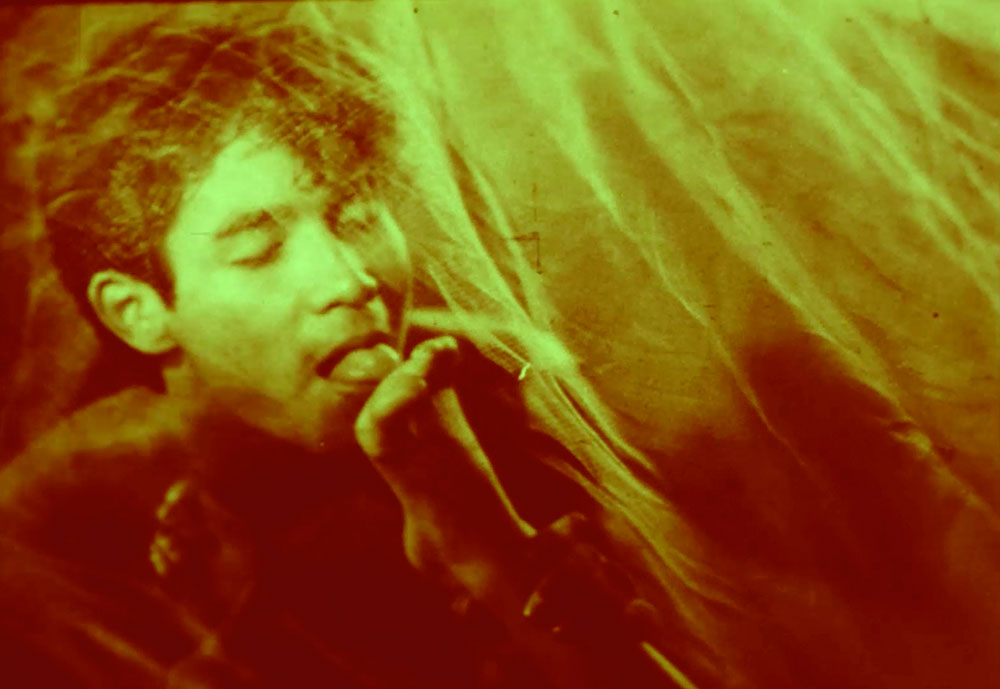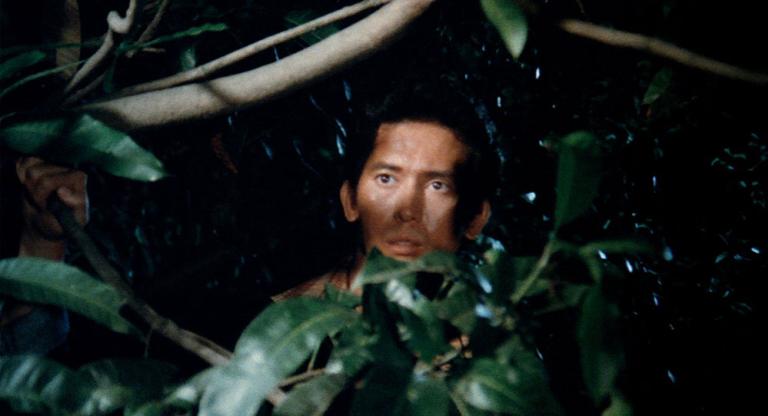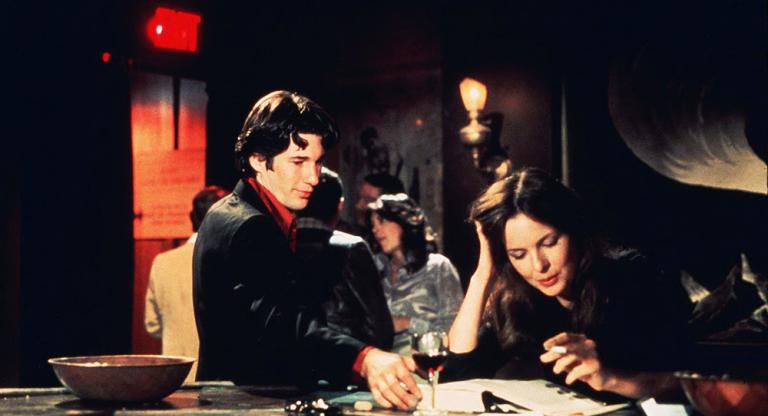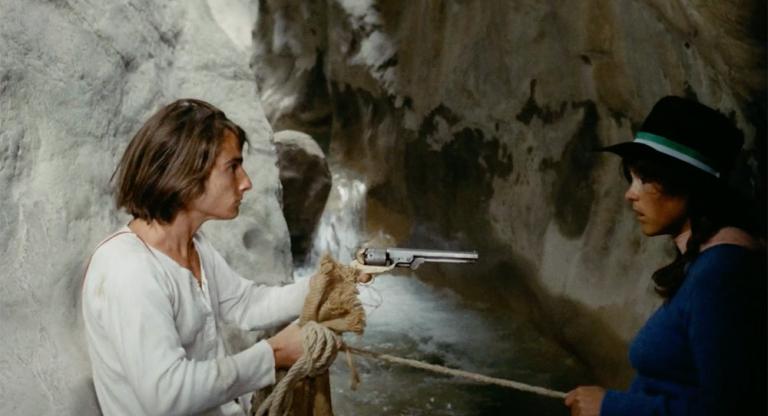More than sixty percent of the films domestically produced in the Philippines have been lost to the sultry climate for want of air-conditioned vaults. As a result, repertory programming of Philippine cinema can settle into predictable, chronological orders in an effort to restore and preserve a sense of historical continuity. But artist-researcher Merv Espina and artist-filmmaker Shireen Seno’s traveling program, “The Kalampag Tracking Agency: 30 Years of Experimental Film & Video from the Philippines,” manages to join an archival project with a viscerally unconventional curatorial bent. Spanning thirteen films made from 1985 (just before the end of martial law in the country) to 2012, the lineup ricochets between decades achronologically—and sometimes invisibly, as some of the films are made to appear older than they are. The works in the program share distinct characteristics—vivacious color effects, authorial rage bleeding through sardonic juxtapositions, and a momentum that might stir the audience to wake up and move.
Kalampag translates into English as “a series of bangs,” which according to the program notes, is meant to evoke the idea of “tiny explosions in your brain that rattle you to take action.” Roxlee’s ABCD (1985) is the most explosively dissident, and the only film in the program produced during martial law. It parodies an educational animation for toddlers learning the alphabet: “A is for animation. B is for beard . . . ” But at “C is for circle,” Lee’s innocuous hand-drawn circle morphs into a bleeding bullet hole, alluding to the Ferdinand Maros regime’s extrajudicial killings, and then “D is for dictator,” and so on . . .
Yason Banal’s Chop-Chopped First Lady + Chop-Chopped First Daughter (2005) suggestively places footage of the attempted assassination of former First Lady Imelda Marcos beside a gory scene from a “massacre movie” inspired by the infamous real-life “Chop-Chop Lady” murder. This two-channel video installation turned split-screen film embodies what I imagine filmmaker and preservationist Mike De Leon means when he refers to the Philippines as “a magic realist country.”
Many of the films in the program from the ’80s and ’90s were produced in workshops organized by the Movie Workers Welfare Foundation (better known as Mowelfund) in partnership with the Goethe-Institut, which introduced the filmmakers to New German Cinema. I spoke with co-curators Espina and Seno, who fill in some of the vibrant history behind the earlier experimental films in “Kalampag” and explain how it has evolved in both curation and presentation since it premiered in 2014.
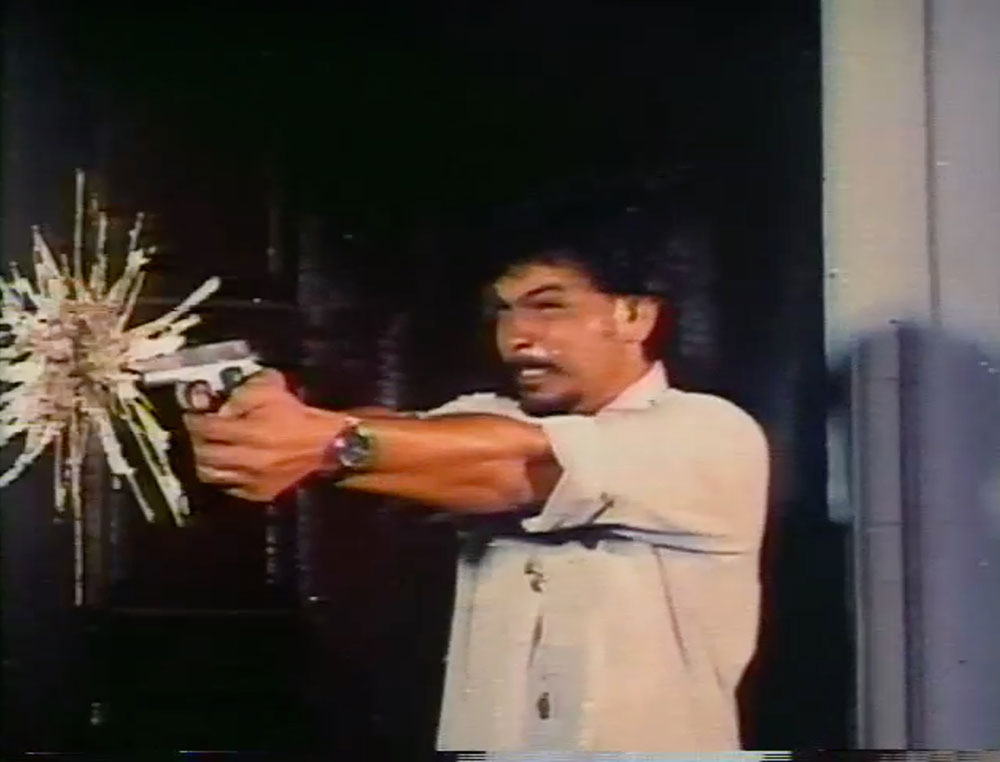
Aaron Hunt: Did you expect “Kalampag” to circulate this long?
Shireen Seno: It took on a life of its own. We didn’t have grand ambitions for it. We were just putting a program together for the Experimental Film and Video Festival in Seoul (EXiS) in 2014. Then it turned into something else because what we showed was two programs. We used the first couple of screenings to test the waters and realized it was way too long for an experimental program. We had to cut it down and make it more formally concise.
AH: What were some of the films you cut?
SS: There was Raymond Red’s Magpakailanman [The Eternity] (1982), Pilipinas: What Do You Think of the Philippines Mr. Janetzko? (1989)...
Merv Espina: In the early years, like 2014–2016, we were still working on getting better copies of the films. As the program traveled, either me, Shireen, or one of the artists would present it, and sometimes we’d take that opportunity to make transfers of their works. The early version [of “Kalampag”] was all DVD copies—transfers of transfers of transfers. At some point in the ’80s and 90s, they started shooting the films against a white wall.
SS: DIY digitizing!
ME: You could hear them drinking in the background. [laughs] It was surprising to hear what the sound was like in actual copies of the films, especially in Roxlee’s works [ABCD and Juan Gapang (1986)]. It was crisper, and you wouldn’t hear extra chatter in the background.
AH: Can you tell me about the Christoph Janetzko workshops that produced many of the films in the program?
ME: Janetzko was one of the most prolific instructors at the Goethe-Institut. He went to Manila and did two successive workshops in 1988 and 1989. Then he started to do workshops around the world. There was this really important experimental film congress in Toronto [International Experimental Film Congress, Toronto, May 1989.], which he was also a main initiator of. . . . I think that was the last hurrah for a certain generation of filmmakers—Michael Snow, Brakhage, and the European and Japanese experimental filmmakers there. This also exposed people to the Manila workshop films. Nick Deocampo [Mowelfund Director from the late 1980s until the 1990s] was also there. The exposure of the Philippine experimental films there and its relationship to Janetzko and the Goethe-Institut workshops directly resulted in the 1991 workshop in Rio de Janeiro. Some Brazilian filmmakers were there in Toronto, and they invited Janetzko through the Goethe-Institut.
Janetzko went to Glasglow in 1990; Rio de Janeiro in 1991; Bangkok, Hong Kong, and Seoul in ’92. Those workshops were super influential to filmmakers like Pimpaka Towira, an important female Thai director, organizer, and producer; and Manit Sriwanichpoom, an important contemporary artist and photographer. In Seoul, Park Chan Wook’s brother, Park Chan-Kyong, who is a media artist, was part of the workshop also.
SS: In Manila, it was Lav Diaz and Garin Nugroho, a famous Indonesian filmmaker.
ME: Actually, Garin was in the Harun Farocki workshop.
SS: Harun Farocki came to Manila and did a directing workshop, but didn’t understand what he was doing. [laughs]
ME: I think it was the first time he did something with the Goethe-Institut. He wrote about it in “Kino Sine Philippine-German Cinema Relations” [in his sincerely titled essay “I Don’t Think I Was the Right Seminar Leader” – Ed.]!
AH: Is there any indication or evidence that the Philippine Information Agency [PIA] may have influenced the creative decisions of these films?
ME: I imagine during the dictatorship that the PIA was the propaganda arm. The most important thing was that they opened up their lab facilities to the filmmakers. Some of these films were edited there. As part of the Metrograph program, we interviewed one of the filmmakers from that era, Eli Gueb III (Kalawang), and he told us about editing the film in PIA. After the dictatorship, PIA was quite important. So people like Kidlat Tahimik worked there. For a long time, he kept some of his films there, where they were also processed.
AH: Did these filmmakers face any punishment or harassment from the Marcos regime? I was surprised by how outrightly anti-Marcos ABCD was despite being released during Martial Law.
ME: ABCD was produced independently. Only after ’86 did the PIA have anything to do with those films. So stuff before ’86 was made outside of it. But a lot of the artists were still processing the dictatorship before and after. The threat to their lives was more because of their activism, not so much their filmmaking. Experimental films didn’t really have a wide enough visibility in the Philippines. But it’s different for more direct filmmaking, like documentaries.
SS: At the time, Goethe was really the center for film education. They would show a lot of amazing art films, and filmmakers were very influenced by what they saw. Eli Gueb III (one of the directors of Kalawang) was already involved in socially and politically minded groups and NGOs. Experimental film gave him a new language for his advocacy.
ME: The Goethe-Institut also had these touring programs [of films made in the workshops], like “Experimental Films of the ’80s.” It was part of their experimental film advocacy in the early ’80s and ’90s.
SS: This was part of a larger, German cultural policy of the time—the German guilt thing.
ME: I think they were trying really hard to culture wash their image and infiltrate a sense of possibility and freedom. They were also stepping up a lot because American cultural support was waning after America’s defeat in Vietnam. The Australians also stepped up their cultural initiatives at this time.
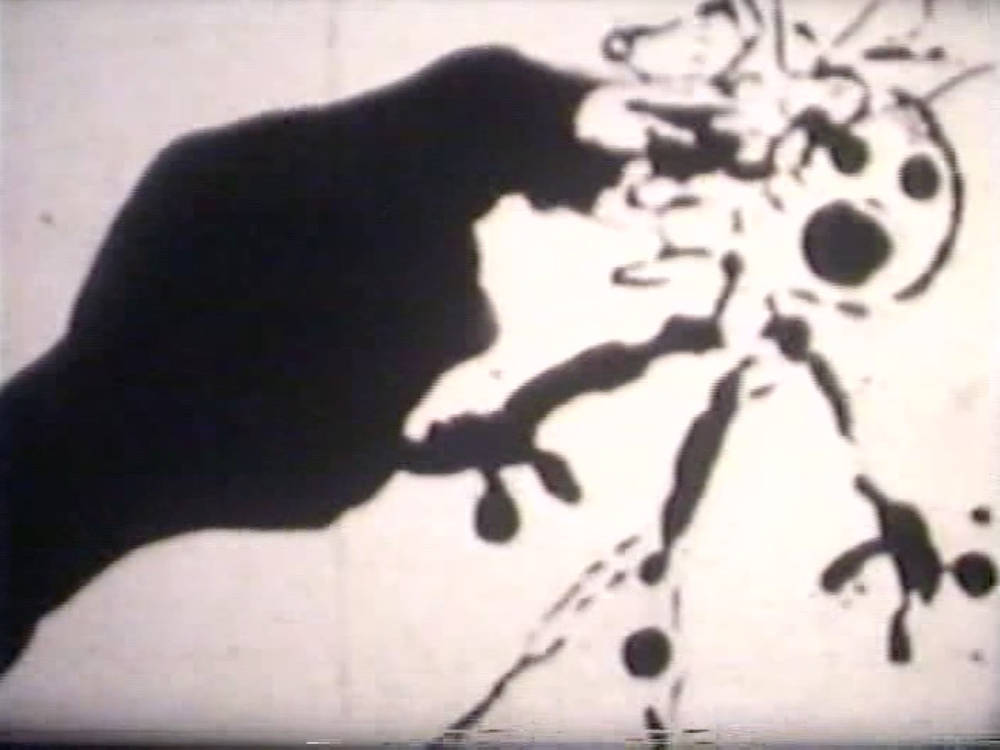
AH: What was your relationship to these films before you curated the program?
SS: I actually came across the Roxlee works through a young film critic by the name of Alexis Tioseco. When I first came to Manila as a young adult, I introduced myself to him, and he was one of the warmest people, sharing with me not only his knowledge, but his files. [laughs] When Merv and I were putting together the program, we laid out what we had and wanted to show, and then fine-tuned it. We didn’t want a chronological, linear program; we wanted something that created a dialogue between generations. There’s definitely a gap between the ’80s generation, who tend to think of themselves as the “golden age” of experimental film, and the younger ones. We would kind of call those filmmakers out on that in our first screenings. “Kalampag” was an attempt to at least bring the generations’ works together to create something new.
AH: I love the arc between the last four to five films. I had assumed the newer films in this segment, Raya Martin’s Ars Colonia (2011) and Tito & Tita’s Class Picture (2012), were—similarly to the ’80s and ’90s ones—repurposing archival footage. But I was surprised to read that the footage in both films was shot in the present day and then manipulated to feel older afterward. How did this final section of the program come to be?
SS: [While watching] it’s kind of ambiguous when each film was made because they are so similar . . .
ME: Maybe there’s this interest in archival quality today because of the materiality. The rumor is that some of these prints were half submerged in a creek, whereas there are newer works using expired film, like Class Picture. What bridges the two generations is that they’re making use of the dregs and debris of the industries.
SS: Yeah, Class Picture was made using the short ends that Gym Lumbera and Timmy Harn got from filmmaker Sari Dalena. There’s a lack of tangibility to the process of making for our generation; a lot of us long to work with our hands, which we never really learned to do. So we need to play around and use our hands again. There’s kind of a romanticism with film too; it’s a way of trying it for ourselves.
ME: We eventually realized that we had stumbled into an archival project. When we started, a lot of these works either weren’t in an archive or there was not a lot of interest in them.
SS: The program became a way of getting people to care about the lack of an archive. The copy that we have of Tad Ermitano’s The Retrochronological Transfer of Information (1994), unfortunately, is pretty rough, because his own print turned into vinegar. The version we have is from a VHS, so a print is something we’re still trying to hunt down.
ME: But I like it. A lot of these new hipster films aspire to this VHS quality. The only copy we have is from a Japanese TV company that folded, so it has Japanese hard subs. [laughs]
AH: How has the program been sustained this long?
SS: We took a break for a couple of years. Then, this year, REDCAT gave Los Otros the floor to screen anything. I thought it would be good to show “Kalampag” because it had been a while and because the Marcoses are back in power. I think it’s something that has to be shown continuously. It really should be shown here [in the Philippines], but it also helps if we can get people out there to care about what’s happening here, and the archiving. I feel like it should be part of literacy and public education to watch these films. They should play on TV!
ME: There was an attempt by the National Film Archive of the Philippines and the FDCP [the Film Development Council of the Philippines] to show “Kalampag” in regional cinematheques. But both of these agencies are under the President . . . they were too inept.
SS: It was a really bad experience. The FDCP has a good amount of cinematheques scattered across the country. When we went to Davao [City] to show it in, like, Duterte country, the people who were running the cinematheque didn’t even realize they were showing the program squeezed [into the wrong aspect ratio]. There’s a lack of technical training.
ME: Or total ineptness.
SS: We had a screening at this public art festival in Angono, a small town just outside of Manila. We projected it on a makeshift screen in the parking lot of a bank, the site of the former cinema in the town. It was cool to screen it to ordinary people. They didn’t stay very long. [laughs] But hopefully they were exposed to the strangeness of the program, even if only for a second. Unfortunately, it tends to stay within these kinds of experimental film and art circles, only occasionally reaching a broader community.
AH: Is there anything else you want to touch on that we haven’t yet had the space to talk about?
SS: The inauguration of Bongbong Marcos [this June] hit me hard. It made me want to screen this program more. History keeps repeating itself. We keep forgetting. Wishfully thinking, These films can be a way to keep that past alive and undistorted by the Marcoses. You know what they’re doing now? Maid in Malacañang [a film about the Marcoses' last seventy-two hours in Malacañang Palace, told from the ruling family's perspective, with Imee Marcos as creative director and dubiously inflated box office reporting]—you’ve heard about that right? It’s ridiculous. But they know it’s going to work. People love that stuff. They know they have the imagination of the people—they’re like the royal family in Britain.
ME: From the get-go, the Marcoses really knew how to use culture as a propaganda device. The ECP [Experimental Cinema of the Philippines, a now-defunct government-owned corporation that was run by Imee Marcos] even funded cinema with veiled critiques of the regime like Oro Plata Mata [1982]. Now, because they’re trying to clean up their mess from the bloody years of the last dictatorship, they’re trying to trivialize and warp those histories. Literally, they’re rewriting history books as we speak. They buried [Ferdinand] Marcos in the Hero’s Cemetery—so they’re making symbolic actions and art. It’s really a struggle for memory.
AH: It’s shocking how quickly they turned Maid in Malacañang around and released it in theaters.
SS: They have the machinery, the money.
AH: Have you seen the experimental film community in the Philippines respond in any way to the inauguration yet?
ME: As you can see in the older works, even after the dictatorship ended, it was still fermenting—the filmmakers were still processing it. In the next couple of years, I think there are going to be very creative or very direct ways of showing dissent through film and video.
SS: Personally, it makes me want to be more vocal through my work.
“The Kalampag Tracking Agency: 30 Years of Experimental Film & Video from the Philippines” screens tonight, August 14, at Metrograph.
